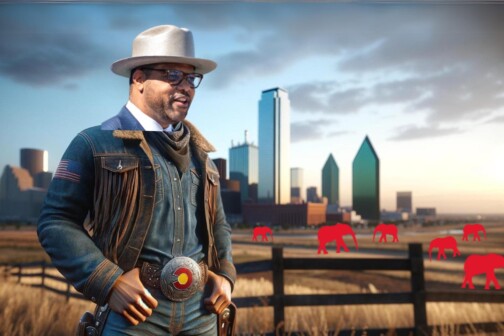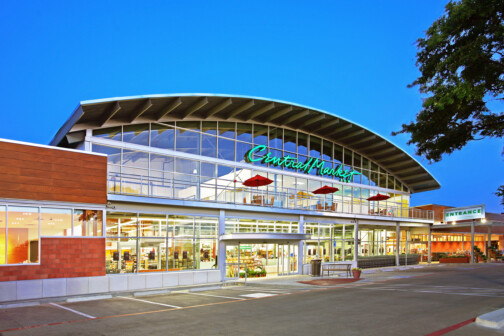With block after block of neat brick homes, a spindly tree or two struggling to take hold in each front yard, The Colony looks about like most middle-income housing developments around Dallas. But this Fox and Jacobs development seven miles east of Lewisville and 13 miles north of Dallas is a little different.
For one thing, The Colony is a city, having voted to incorporate earlier this year. With 3,500 residents, it was the largest community in Texas ever to seek incorporation. And for another thing, The Colony seems to have fostered an attitude of community involvement unlike most housing areas inhabited by young and mobile middle-class families on the way up.
Linda Adams is a good example. She and her husband John moved to The Colony from Columbus, Ohio, in 1974. Like most young people, she had never been involved in community affairs.
“I began to get involved down here I guess because I had the time. We moved out here, and I didn’t know anybody, and John travels so I became active to meet people. As I became active, I found more things I felt needed to be done.”
The first project Mrs. Adams and her neighbors took on was to raise money to buy equipment for the volunteer fire department. Fox and Jacobs had provided $100,000 for a station and two trucks, but the department still needed helmets, boots, axes and oxygen equipment. A community auxiliary was formed and two big fund-raisers were organized – a flea market which raised $1,500 and a Volunteer Day which raised $1,800, all within one summer.
“We’re relatively isolated out here,” Linda Adams points out, “so when there was a need, if you didn’t do it, it didn’t get done. We had problems with stray dogs, for instance, and we needed something for the children on Halloween so we worked together to get what we needed. We were upset with the telephone company because a call to Lew-isville, where our children go to school, is long distance. Of course, you can’t fight Ma Bell, but John and some others went to Austin and testified before the Public Utilities Commission. That’s supposed to be changed by September of this year.”
With the continued growth and development of the area, incorporation seemed the next logical step, but no one knew very much about the incorporation process. “People kept asking me questions about incorporation,” Mrs. Adams recalls, “and I didn’t know the answers so I enrolled in a municipal law course at North Texas State. If I didn’t have all the answers after taking the course, I at least knew the questions to ask.” She was made chairman of The Colony Homeowners’ Association.
At the start of the incorporation process, The Colony lay within the extraterritorial jurisdiction of Frisco, a town of about 1,700 people, seven miles away. Frisco thus had the authority to annex the area, but after extended negotiations, the Frisco City Council voted not to do so. “I think they were afraid we’d take over Frisco, that in two years we would be at their doorstep,” Mrs. Adams says. “And they were afraid Fox and Jacobs would buy up all the land around here.”
Eventually a compromise was reached. The Colony Homeowners’ Association agreed to incorporate about 2,500 acres, 4 square miles, with a 5-foot strip around the area remaining under Frisco jurisdiction. The compromise seems to effectively contain The Colony, but Mrs. Adams believes that future developers will probably break up the 5-foot barrier. “They’ll go to Frisco for the services they need,” she predicts, “and Frisco won’t be able to provide them way out here. So they’ll have to come to us.”
The Colony became a city on January 15, with 459 residents voting for, and 37 voting against. Three days after working all day as an election official, Linda Adams gave birth to a 6-lb. son.
The new mother got a few days’ rest; then it was back to work for her newborn city. “Basically we voted to incorporate just to have some control over our own destiny,” she says.
Fox and Jacobs, which now provides street lighting, ground maintenance, street repair, street signs, and other services, plans to gradually relinquish responsibility for services as the city becomes able to take them on. That should take about six years. A Municipal Utility District, owned by The Colony, supplies water, sewer, storm drainage, and sewage treatment service, and law enforcement is provided by Denton County’s Sheriffs Department.
Meanwhile, with two new churches, a newspaper, a new soccer field, an elementary school opening in the fall, and a proposed shopping center, The Colony seems on its way. But for a city that expects a population within the next few years of 30,000 – 5,000 by the end of the summer – there’s much to be done. The first step is the election April 2 of a mayor and five-member city council. Setting a tax structure, deciding what to do about a municipal building, and settling on a new name (there is already a Colony, Texas) will be major items of concern.
One of the council candidates is, of course, a young wife and mother named Linda Adams.
Get our weekly recap
Brings new meaning to the phrase Sunday Funday. No spam, ever.
Related Articles

News
White Rock Medical Center Temporarily Stops Receiving Ambulances and DFW Ranks 45th in Latest Hospital Safety Rating
Plus UT Tyler's new dermatology department, Children's Health's honor, and more.
By Bridget Reis

Local News
Mayor Eric Johnson Makes Another ‘Friendly Belt Buckle Bet’
This time its on the Avalanche-Stars game.
By Tim Rogers

Commercial Real Estate
Checking in on HEB’s Plans for the Old Albertson’s in Uptown
The property at Lemmon and McKinney remains undeveloped despite years of announcements and renderings that depicted a $295 million, 25-story mixed use development anchored by a Central Market. What's going on?
By Will Maddox


